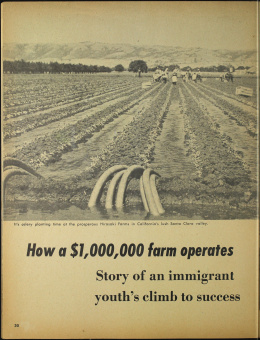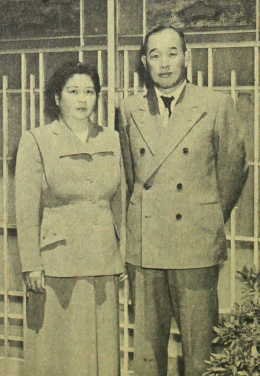Kiyoshi Hirasaki
| Name | Kiyoshi Hirasaki |
|---|---|
| Born | March 1 1900 |
| Died | December 24 1963 |
| Birth Location | Kumamoto Prefecture, Japan |
| Generational Identifier |
Farmer and community leader. Issei farmer Kiyoshi Hirasaki became known as the "Garlic King" of Gilroy just before World War II, when he became the country's biggest garlic grower. Born to a farming family in Kumamoto Prefecture, he came to California to join his father and older brother at age fourteen. After going to school and working as a laborer—having come to the U.S. at a relatively young age, he learned to speak English well—he started to work for the Kimberlin Seed Company in Milpitas. Marrying at age 21, he opened his own seed shop in San Jose, living with his family in the back of the store. In 1932, he borrowed money to purchase a 400-acre ranch in Gilroy. Struggling to develop the land initially, his ranch grew through to 1,600 acres before the war, growing a variety of crops and seeds. But he became best known for garlic, which grew well in the relatively dry climate of Gilroy. He also became known for the showpiece Japanese style house he had built by the well-known home builders Shinzaburo and Gentaro Nishiura that incorporated parts of the Japanese pavilion the pair had built for the 1939 Golden Gate International Exposition on Treasure Island. The house was completed in October of 1941.
After the attack on Pearl Harbor, Hirasaki was arrested by the FBI and sent first to the nearby Sharp Park internment camp, then to Fort Lincoln in Bismarck, North Dakota. In the meantime, his family, which now included eight children, resettled "voluntarily" in Grand Junction, Colorado. Hirasaki was released in Sept. 1942 and rejoined his family in Grand Junction. After the war, he and his family moved back to their Gilroy ranch, which had been competently managed by a white friend who had paid off the mortgage with rental income. He went back to farming—his farm grew to 1,200 acres by the late 1940s—and also played a larger role in the community through activity with the Buddhist Churches of America and through being one of the founders and president of the Hokubei Mainichi newspaper. He also began a number of agricultural ventures in Japan and shuttled back and forth between Japan and Gilroy in the last years of his life. He died back in Gilroy on Christmas Eve, 1963.
For More Information
Hirasaki, Manabi, with Naomi Hirahara. A Taste for Strawberries: The Independent Journey of Nisei Farmer Manabi Hirasaki . Los Angeles: Japanese American National Museum, 2003.
"How a $1,000,000 Farm Operates." Scene 2.10 (February 1951): 30–34.
Japanese American Curriculum Project. Japanese American Journey: The Story of a People . San Mateo, Calif.: Japanese American Curriculum Project, 1985.
Last updated July 8, 2020, 7:33 p.m..

 Media
Media

